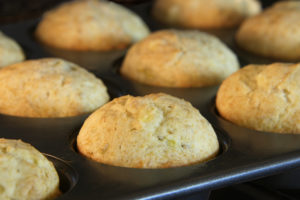By: Melissa Joy Dobbins, MS, RDN, CDE —
There’s no debating it: Diabetes is a serious and growing national health concern. Nearly 30 million people (9.3% of the U.S. population) have diabetes, and 86 million (more than 1 out of 3 adults) have prediabetes.
I’ve been a certified diabetes educator for nearly 20 years and a registered dietitian for 24 years. Helping people with diabetes live healthier, happier, and fuller lives has been the most rewarding part of my career. Healthcare professionals can truly make a difference in the lives of people with diabetes by empowering them to explore various strategies and tools, and help them discover their own unique path to achieving their diabetes self-management goals.
The primary focus of diabetes management is blood glucose control. Aiming for specific, individualized blood glucose levels through eating habits, activity, stress management and sometimes medication(s), is key. Keeping carbohydrate intake consistent, and within a certain range, at meals and snacks is an important factor in maintaining blood glucose control.
Low-calorie sweeteners, sometimes known as non-nutritive sweeteners, are useful tools in managing carbohydrate intake and therefore, in managing blood glucose levels. The Academy of Nutrition and Dietetics’ Position Paper “Use of Nutritive and Nonnutritive Sweeteners” discusses the safety, function and regulatory status of sweeteners. The American Diabetes Association states that “choosing NNS [nonnutritive sweeteners] instead of nutritive sweeteners is one method to assist with moderating carbohydrate intake.” Now, there is a new tool in the low-calorie sweetener toolbox: allulose.
As a health care professional, here’s what you need to know about this new sweetener for people with diabetes:
• What is allulose? Allulose is a monosaccharide that is absorbed by the body, but not metabolized and has no impact on blood sugar. It is a low-calorie sweetener that tastes just like sucrose and also has the texture, taste and performance (structure/function) of a full calorie sugar. Food and beverage manufacturers have found that, like conventional sugar, allulose browns when baking, provides the same texture and mouthfeel sweetener properties, and exhibits bulking properties. Due to its positive technical attributes, allulose is particularly useful when combining sweeteners.
• Where does it come from? Allulose, which exists in nature in very small quantities (hence the term “rare sugar”), was initially identified from wheat and has since been found in certain fruits including jackfruit, figs and raisins. Allulose is also naturally present in small quantities in a variety of sweet foods like caramel sauce, maple syrup and brown sugar.
• How does it affect blood sugars? Research shows that allulose has no impact on blood glucose.
• Is allulose safe? Allulose has received ‘Generally Recognized as Safe’ (GRAS) status from the U.S. Food and Drug Administration (FDA). Given its GRAS status, taste and functionality, manufacturers are looking to allulose as they consider reformulating to reduce sugar.
• How well is it tolerated? Researchers found allulose to be well tolerated without causing any gastrointestinal symptoms.
• Where can you find it? Allulose is becoming more available online as a table top sweetener, and is becoming more common as an ingredient in foods and beverages on store shelves.
As a dietitian and diabetes educator, I am always looking for ways to help people ‘do more with diabetes’ and I definitely encourage them to explore the wide variety of tools and strategies that exist so they can enjoy their food while keeping their health in mind. Allulose is a promising new tool to help them do just that — enjoy the experience of more foods, with no impact on blood sugar. For more information, check out the latest science and these FAQs about allulose at www.allulose.org.
 Melissa Joy Dobbins, MS, RDN, CDE is a nationally recognized registered dietitian nutritionist with more than 20 years’ experience helping people enjoy their food with health in mind. Melissa is a certified diabetes educator, a former supermarket dietitian, and also a former national media spokesperson for the Academy of Nutrition and Dietetics (AND). She was named Outstanding Dietitian of the Year in Illinois by AND and Outstanding Diabetes Educator of the Year in Chicago by the American Association of Diabetes Educators. She is a paid contributor of the Calorie Control Council. Melissa is the CEO of Sound Bites, Inc. based in Chicago, Illinois, and you can connect with her on Twitter (@MelissaJoyRD), Pinterest, Facebook, and check out her blog at SoundBitesRD.com.
Melissa Joy Dobbins, MS, RDN, CDE is a nationally recognized registered dietitian nutritionist with more than 20 years’ experience helping people enjoy their food with health in mind. Melissa is a certified diabetes educator, a former supermarket dietitian, and also a former national media spokesperson for the Academy of Nutrition and Dietetics (AND). She was named Outstanding Dietitian of the Year in Illinois by AND and Outstanding Diabetes Educator of the Year in Chicago by the American Association of Diabetes Educators. She is a paid contributor of the Calorie Control Council. Melissa is the CEO of Sound Bites, Inc. based in Chicago, Illinois, and you can connect with her on Twitter (@MelissaJoyRD), Pinterest, Facebook, and check out her blog at SoundBitesRD.com.


